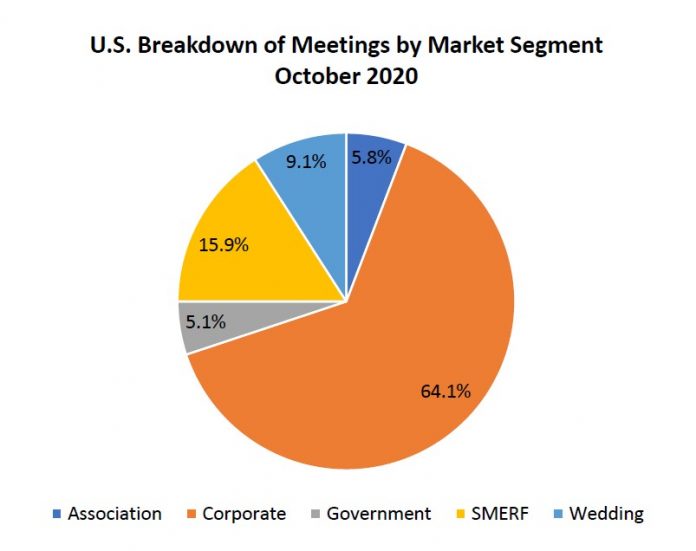
ARLINGTON, Va. — October U.S. monthly meetings and events volume showed growth of 53.6 percent over the previous month, according to the latest data from Knowland, provider of group hospitality analytics for hotels, convention and visitor bureaus, conference centers, and other meeting venues.
While meetings are nowhere near the volume of 2019, meeting volume each month continues to improve over the prior month. One thing that remains consistent is the reduced size of meetings compared year over year. Local rules on gathering are driving most of this change in behavior. These numbers will continue to ebb and flow as restrictions are lifted or tightened.
Other key findings from the October 2020 meetings and events data from Knowland are as follows:
- Average attendees decreased — The average number of attendees in October 2020 was 42 compared to 75 in October 2019.
- Average square footage used decreased — The average space used in October 2020 was 1,700 square feet while meetings in October 2019 averaged 2,600 square feet.
- Stronger growth in second and tertiary markets — Primary markets grew 32.2 percent month over month while secondary and tertiary markets grew 95.6 percent. Top-growth markets were Charleston, S.C., San Antonio, Texas, and Knoxville, Tenn.
- Corporate meetings represent the largest meeting segment — Corporate meetings produced most of the activity with 64.1 percent of total meetings for the month.
Larger markets have been hit hardest by COVID and customers are hesitant to return to those markets as a result. Smaller markets are more convenient for drive travelers interested in avoiding air travel. In this environment, hotels in smaller markets have the potential to capture meetings that have been traditionally held in larger markets.
Kristi White, vice president of product management, Knowland, commented, “We continue to see meetings grow across all markets. The shift to stronger growth in secondary and tertiary markets is likely because customers consider smaller markets to have higher perceived safety due to less congestion. If you are in one of these smaller markets, it’s crucial you take advantage by having at least some of your staff dedicated to prospecting now. If not, your hotel will be left behind.”











